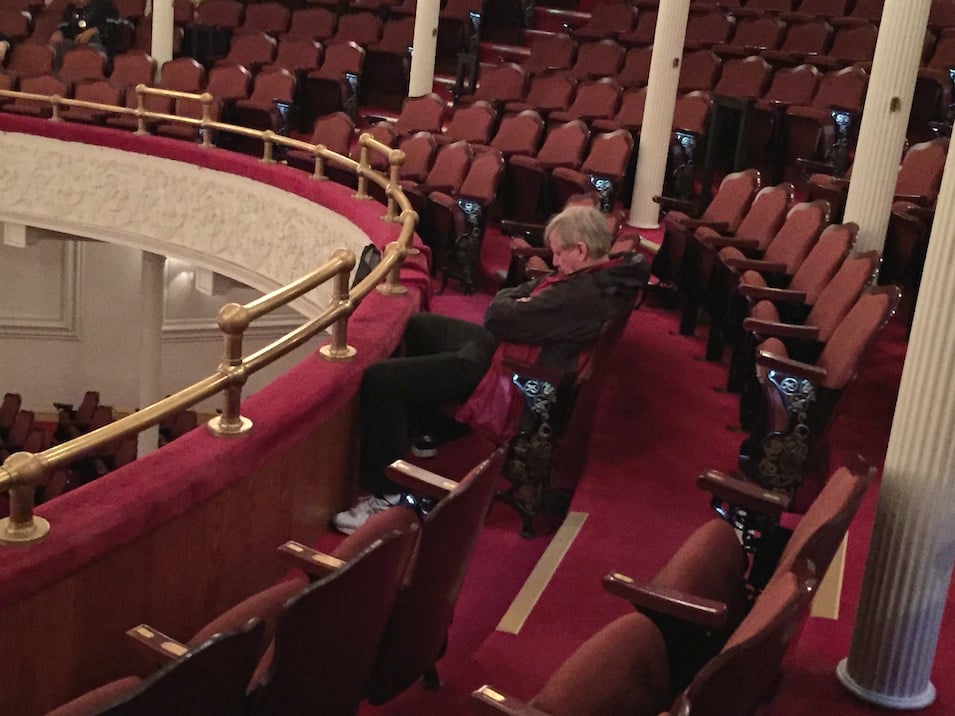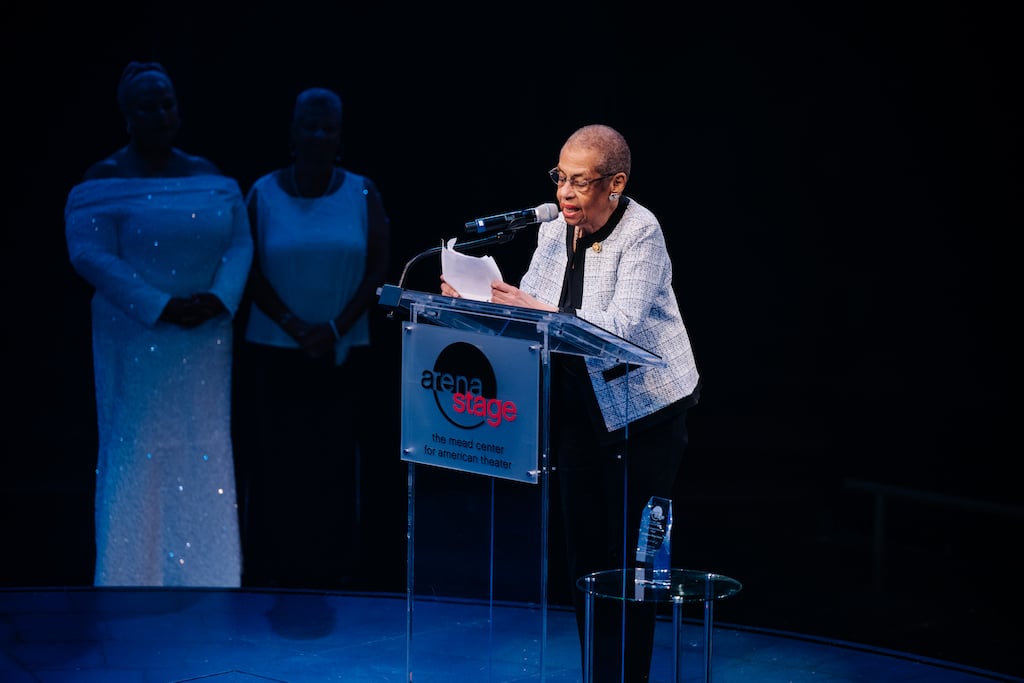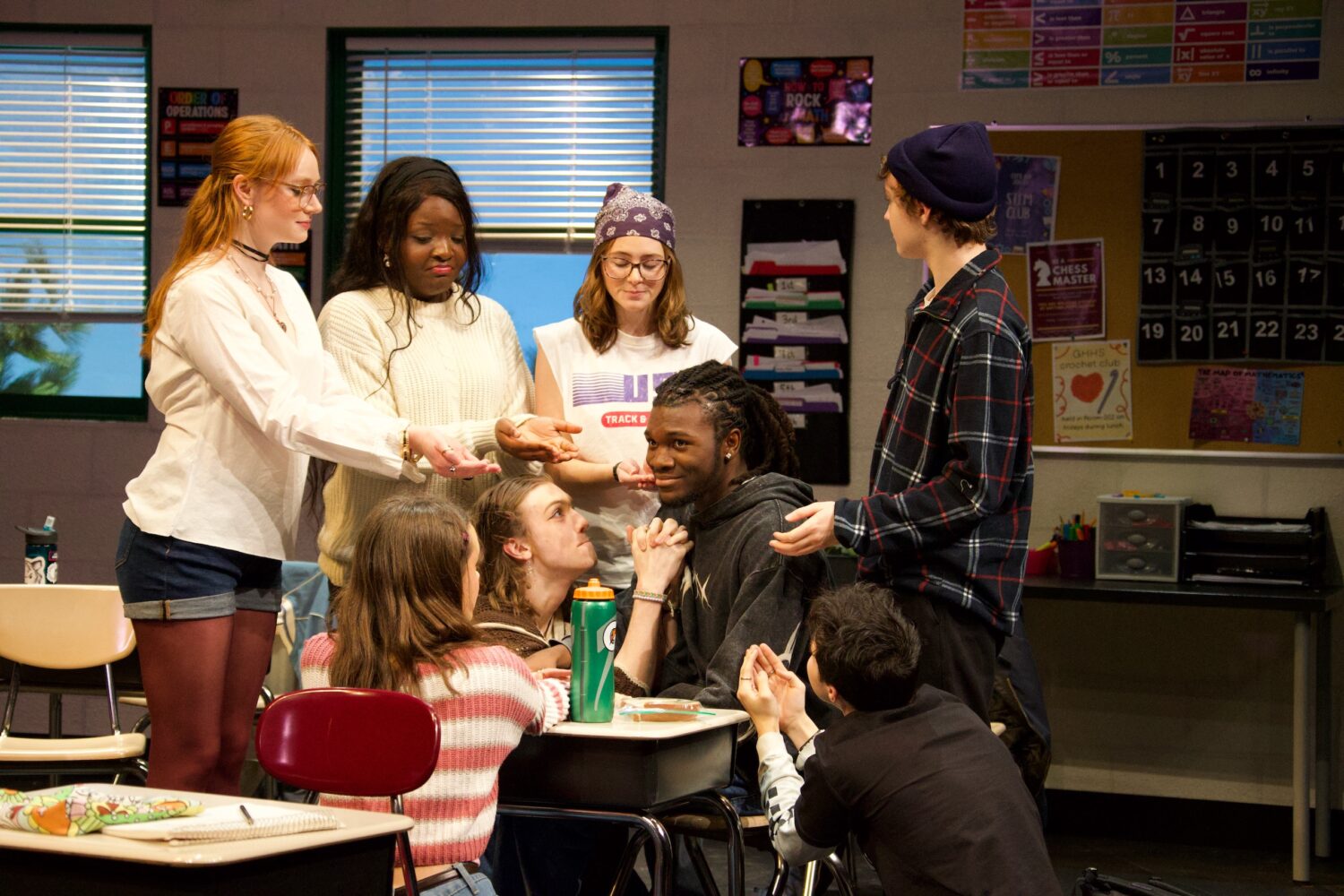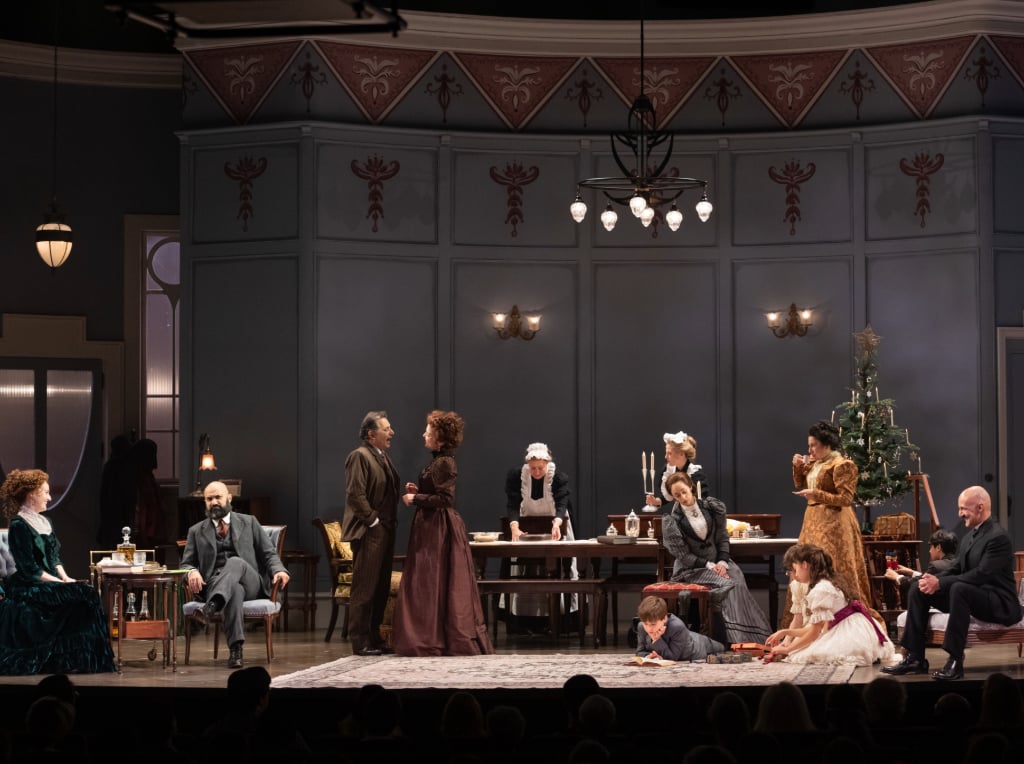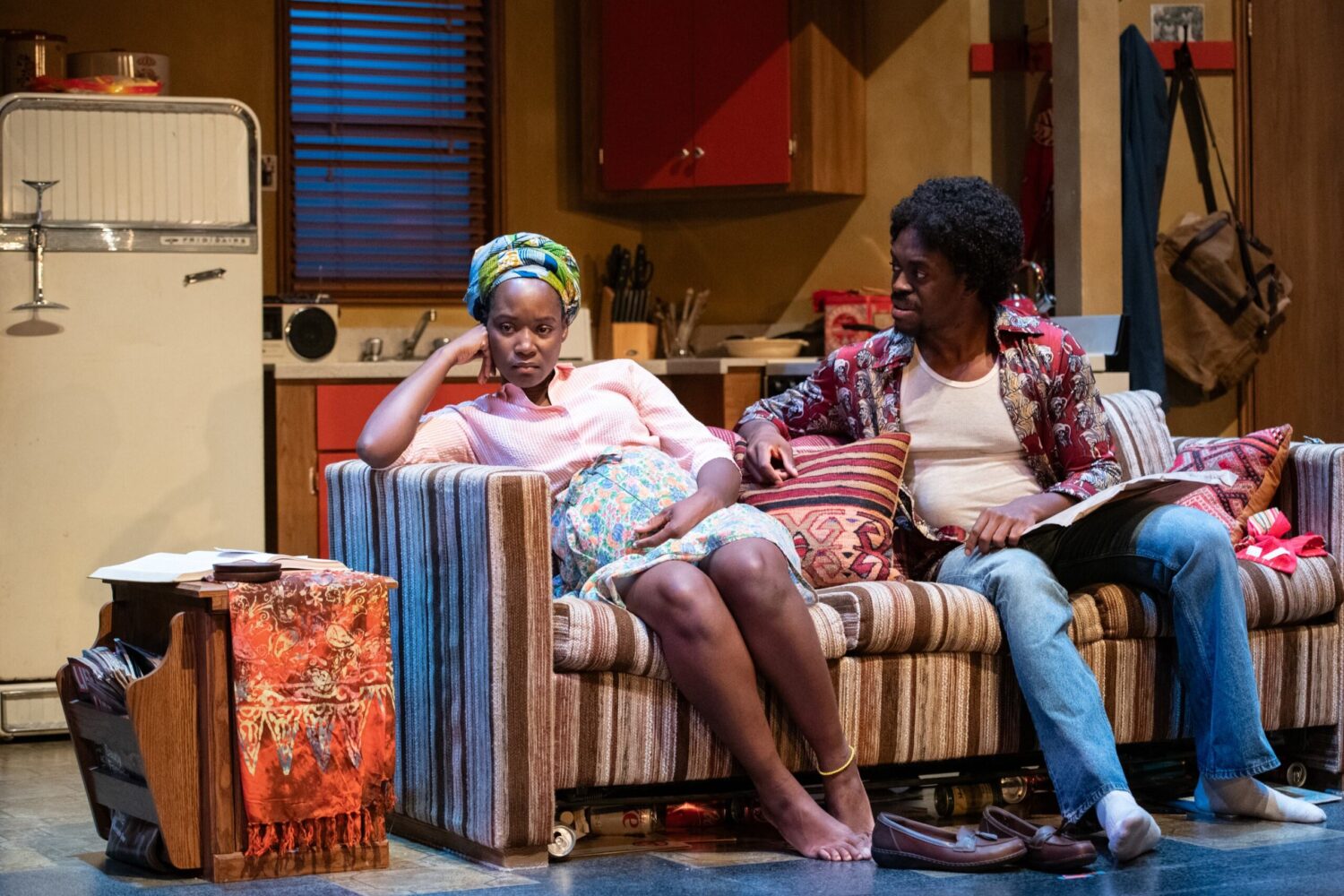Tributes for the 150th anniversary of President Lincoln’s death at Ford’s Theatre started at 9 AM on Tuesday morning and continued until Wednesday at 4:30 PM. In between, there were events best suited for insomniacs: a museum walk-through at 4 AM, a wreath-laying ceremony at 7, and reenactments all through the night. This Washingtonian reporter got up a few hours before sunrise to bear witness to these historic moments. Here’s a play-by-play of what we saw.
4:48 AM: 10th Street Northwest is bustling. Outside of Ford’s Theatre, about 50 tourists have gathered around the exact spot where Lincoln was assassinated 150 years ago. Meanwhile, right in the middle of the empty road, a couple wearing matching North Face jackets and sweatpants chats with a yawning Mary Todd Lincoln reenactor. National Park Service rangers are handing out replica newspapers from April 15th, 1865, and the Federal City Brass Band is tuning their instruments for a performance of the “Battle Hymn of the Republic.” Inside, a full staff of docents and ushers are hurrying people along, trying their hardest to remain attentive despite having worked through the night. A sparse collection of tourists is inside the theater. A very audible and persistent docent stands in front of the stage and says to a young boy: “John Wilkes Booth was a real swashbuckler!”
In the balcony’s front row, a gray-haired man is fast asleep. Next to the president’s box are two Union Army reenactors from Philadelphia. Robert Hicks, director of the Mütter Museum & Historical Medical Library, is dressed as a Union Army surgeon. Why is he here so early? “We felt it was the right place to be,” he says. His companion, Robert Fuller Houston, is a reenactor in the 3rd Regiment United States Colored Troops, a tribute to African-American Civil War veterans. Houston claims he’s a descendent of James Booth, a slave to John Wilkes Booth’s Baltimore estate. “I wouldn’t miss this for the world,” he exclaims. “This all blew my mind, but I’m very tired, kind of groggy.”
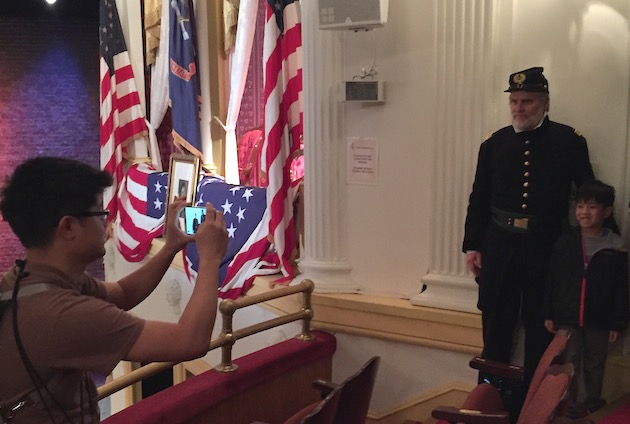
A tourist asks Hicks and Houston to take a picture with his son, next to the presidential box where Lincoln was shot. Houston then returns to his seat. “I’m trying to catch a little sleep here now,” he says.
6:30 AM: It’s sunrise. Local news crews and morning joggers have populated the street, right alongside men and women in period costumes. The Petersen House is running its final tour. A docent explains the debate over Edwin Stanton’s famous quote, which followed Lincoln’s last breath. Was it, “Now he belongs to the ages”? Or “Now he belongs to the angels”? “Either sounds good to me!” the guide concludes.
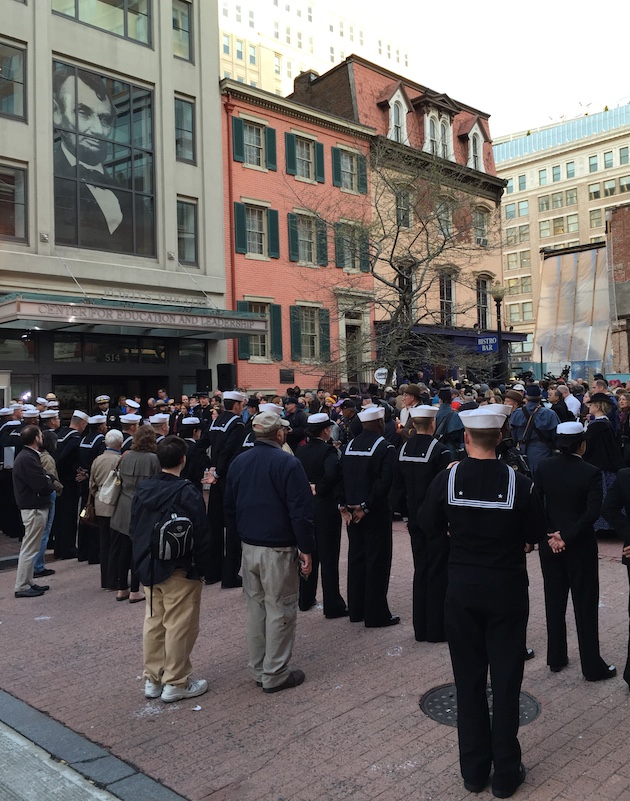
7 AM: A Union Army soldier reenactor in full garb is leaving the Cosi at the corner of 10th and E Streets Northwest. Service members from the USS Abraham Lincoln, a US Navy aircraft carrier, begin to form a line. An assortment of Civil War figures stand across from them holding candles. It’s hard not to be moved by this kind of Civil War buff solidarity.
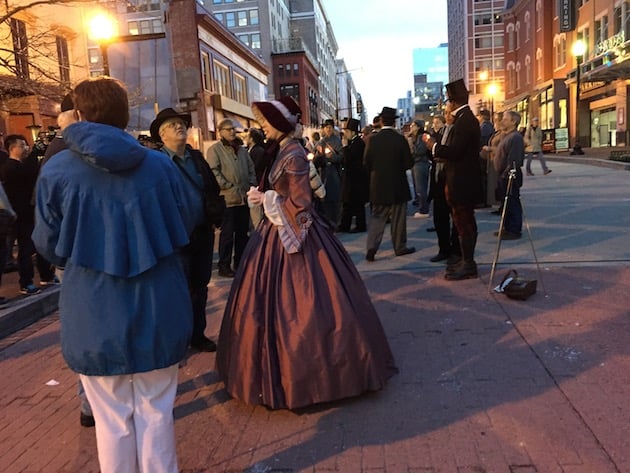
7:20 AM: A man at the top of the steps outside Petersen House reads the original announcement detailing Lincoln’s deteriorating condition–his collapsing pulse and bloodshot eyes. Actor David Selby reads, “O Captain! My Captain!” US Secretary of the Interior Sally Jewell speaks about the importance of this day, proclaiming “Lincoln belongs to us.” Color Guard members lead a procession that ends with the laying of a wreath at 7:22, the exact moment Lincoln stopped breathing. Dr. Hicks, my pal from the theater, is now proudly standing in the center of the action. All appear awed by how shattering this must have felt 150 years ago.

